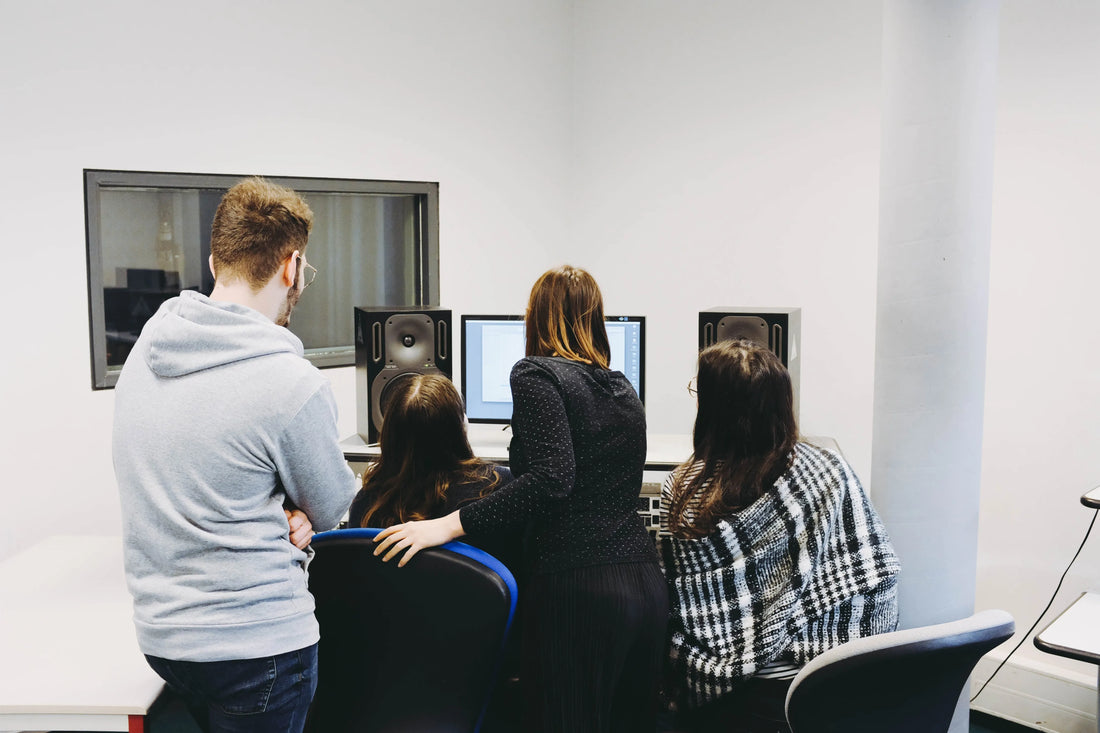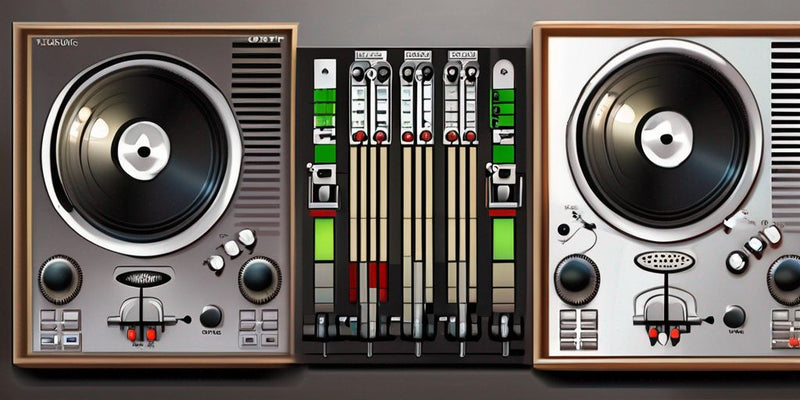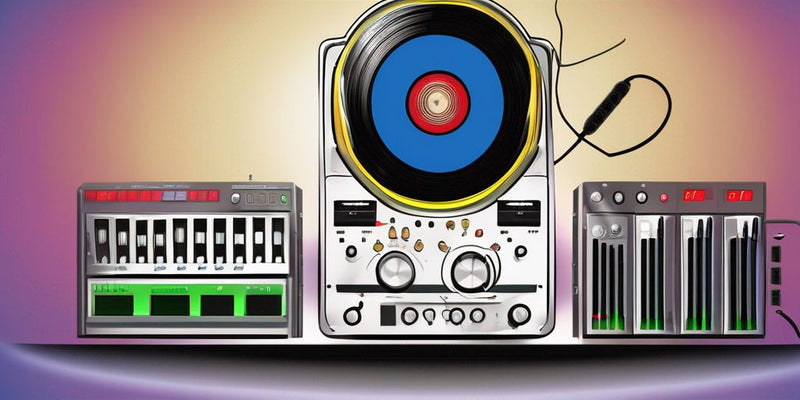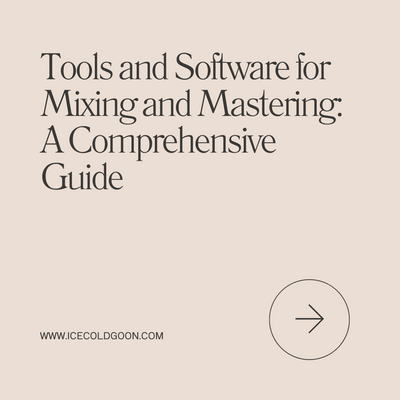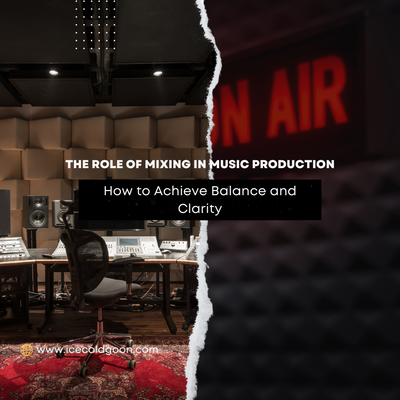Delving into audio production transforms sound into an expressive form of art. This journey, essential for musicians, podcasters, and audio engineers alike, pivots on two critical processes: mixing and mastering. These stages sculpt the raw recordings into a polished, professional product ready for the audience's ears. This guide aims to demystify these complex processes, providing a roadmap to elevate your audio production with practical insights and expert tips.
Understanding the Basics
What is Mixing?
Mixing is the first act in the art of audio refinement. It's where the myriad of recorded tracks — vocals, instruments, and effects — are blended into a harmonious ensemble. This stage is about balance and texture, ensuring each element contributes to the whole without overshadowing others. Mixing adjusts levels, pans audio for spatial effect, and tweaks tones through equalization, setting the stage for a dynamic and immersive listening experience.
What is Mastering?
Mastering is the final polish, the last step before your audio project greets the world. It's a critical review and enhancement phase that ensures your mix sounds its best on any device—from high-end speakers to earbuds. Mastering fine-tuning volume levels enhances clarity and ensures cohesiveness, providing that professional sheen that meets industry standards.
Setting the Stage: Preparing for Mixing
- Organize Your Project: Clarity in your project files is the bedrock of a smooth mixing process. Label each track clearly and keep your sessions organized to streamline your workflow.
- Set Up a Comfortable Workspace: The environment where you mix can significantly impact your productivity and creativity. Invest in an ergonomic setup that keeps you focused and comfortable during long mixing sessions.
- Check Your Gear: The fidelity of your mix depends on the quality and condition of your audio equipment. Ensure your monitors, headphones, and audio interfaces are calibrated and functioning correctly to capture and reproduce sound accurately.
- Listen to Reference Tracks: Having a sonic benchmark is invaluable. Choose several professionally mixed and mastered tracks in your genre as references to guide your mixing decisions and standards.
The Art of Mixing
Balancing Levels
The dance of mixing begins with finding the perfect volume balance for each track, ensuring harmony and clarity. It's about sculpting the foreground and background, allowing the lead elements to shine while supporting parts enrich the overall texture.
Panning
Panning spreads the sound across the stereo field, creating a spacious mix that mimics the natural listening environment. This technique helps separate instruments and vocals, reducing muddiness and adding dimension to the mix.
Equalization (EQ)
EQ is a powerful tool in shaping the tonal quality of each track. It cuts out unwanted frequencies to reduce muddiness and enhances tones, contributing to the track's character and ensuring each element sits perfectly in the mix.
Compression
Compression tames the dynamic range, ensuring consistency in volume and intensity. It smoothens out the peaks and troughs, allowing each track to maintain its presence without overwhelming the mix.
Reverb and Delay
Reverb and delay add depth and ambiance, simulating spaces from intimate rooms to grand halls. When used judiciously, these effects can breathe life into a flat mix, providing a sense of environment and movement.
Automation
Automation brings dynamic variation, allowing for real-time changes in volume, panning, and effects. It's like conducting an orchestra, where each movement and crescendo is carefully orchestrated for emotional impact.
Checking the Mix in Mono
Ensuring your mix sounds good in mono is crucial for compatibility across various playback systems. It helps identify phase issues and ensures your mix remains coherent and impactful, even on mono devices.
Mastering: Putting the Final Polish
Setting the Final EQ
Mastering EQ adjusts the mix's overall tonal balance, ensuring a smooth and harmonious sound spectrum that translates well across all listening environments.
Multiband Compression
This targeted form of compression addresses specific frequency bands, allowing for precise dynamic control. It enhances the clarity and punch of the mix, ensuring each frequency range is well-defined and balanced.
Limiting
Limiting boosts the overall loudness while preventing clipping and distortion. It ensures your track competes in volume with commercial releases, maintaining its dynamics and energy.
Stereo Enhancement
Stereo widening tools can enhance the stereo field, making the mix sound more extensive and open. However, phase coherence must be maintained to ensure mono compatibility.
Final Checks
The last step involves meticulous listening to identify any issues that might have been overlooked. This includes checking for distortion, ensuring seamless fades, and verifying that the track sounds cohesive from start to finish.
Tips and Tricks for Success
- Take Regular Breaks: Ear fatigue can cloud judgment. Regular breaks help maintain a fresh perspective, ensuring critical decisions are made clearly.
- Reference on Multiple Systems: Testing your mix on various systems, from high-quality monitors to smartphone speakers, ensures it translates well across different listening conditions.
- Continuous Learning: The landscape of audio production is ever-evolving. Staying updated with the latest techniques, tools, and trends is crucial for growth and mastery.
- Trust Your Ears: While tools and meters provide valuable feedback, your ears are the ultimate judges. Trust your instincts and make decisions that serve the music best.
Conclusion
Mixing and mastering combine science and artistry, requiring technical knowledge, creative intuition, and an attentive ear. Embracing these processes with patience and practice can elevate your audio projects, allowing them to stand out with professional quality and emotional depth. Remember, every mix and master is a step forward in your ongoing journey as an audio artisan.

